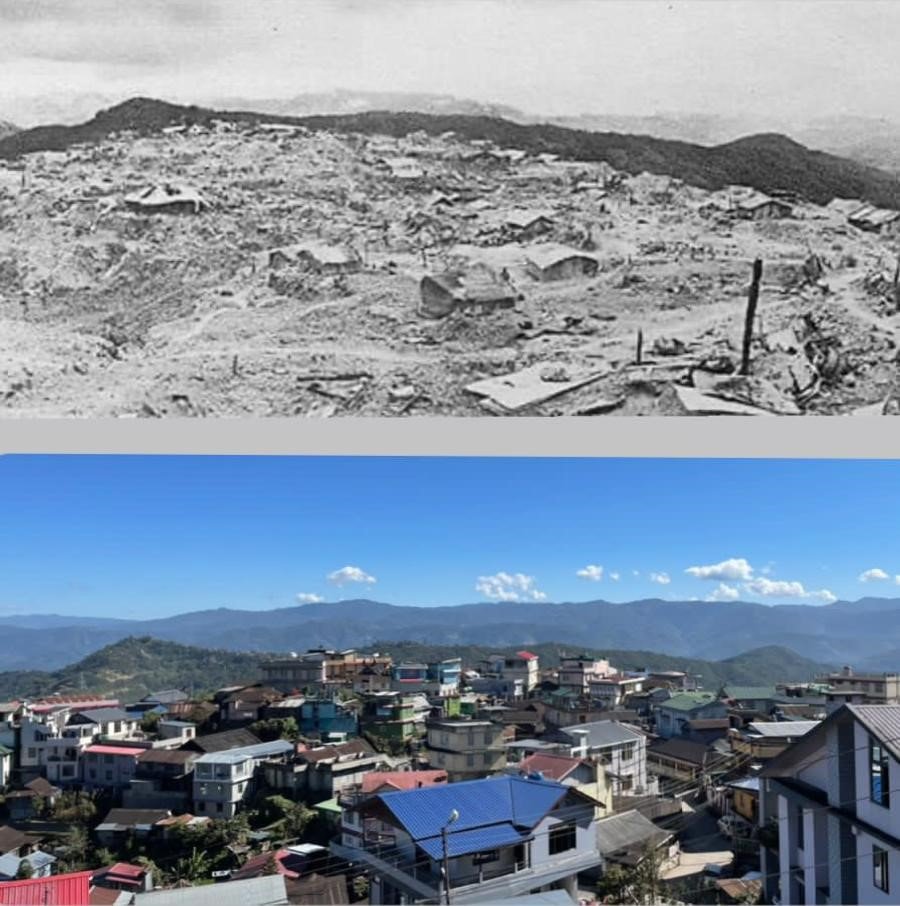“How do you react when you get up one fine morning and find your village completely overwhelmed with Japanese soldiers as it happened in Viswema? Or when 3000 plus fully armed fighting soldiers descended on your village of probably 100 households or less as it happened at Poilwa?” writes Author and Researcher Charles Chasie in ‘The Road to Kohima: The Naga Experience in the 2nd World War?’
Today marks 80 years of the Battle of Kohima in the 2nd World War. The small hill town of Kohima entered the global map during the WWII when the Japanese invaded the Naga Hills in April, 1944.
The 64 days battle which began on April 4 and continued till June 22, 1944 in Kohima is considered Britain’s greatest battle alongside the Battle of Imphal. In a tiny Garrison, less than 1500 British and Commonwealth soldiers faced 15,000 soldiers of the Imperial Japanese Army. Outnumbered, the defenders are said to have fought hand in hand in a savage battle preventing a Japanese victory.
A decisive turning point of WWII, Military historian Robert Lyman claimed that the battle of Kohima changed the course of the Second World War in Asia, with the first major defeat of Japanese forces.
The British and Indian forces are reported to have lost around 4000 men, dead, missing and wounded, while the Japanese lost more than 7000 men in the battle of Kohima.
Download Nagaland Tribune app on Google Play

While several documentations and narratives has offered details on the Battle of Kohima, very few accounts for the impact the Battle had on the Nagas and especially Kohima and its residents.
During the battle, the civilian Nagas served as scouts, spies, guides, porters and stretch bearers while Nagas in the British India Army along with Naga Levies fought as soldiers.
An account by Havildar Zhavise Vihienuo notes, “Kohima was totally destroyed and seemed devoid of all life. The few people we met were shell shocked and seemed unable to speak even. The trees had no leaves or branches while the stumps were full of bullets and shell holes. It was the same for the few houses left standing. Kezieke area was completely bombed out and Kohima village was burnt to ashes. Kohima looked like a ghost town.”

Pukoho Rolnu of Jakhama village who visited Kohima soon after Kohima records, “Kohima was completely destroyed. I saw a lot of rotting corpse, many of them had maggots climbing out of boots. In some, the feet had come apart at the ankles. The stench was horrible.”
(Excerpts from the Road to Kohima by Charles Chasie and Harry Fecitt, MBE, TD)
NO TEARS WERE SHED AT KOHIMA
We were the ones who brought the grief
We died in a battle that was beyond belief
We were the ones who bore the pain
And we were buried in the monsoon rain
No tears were shed at Kohima
Our bodies are buried, but were not there
We are the raindrops in the midnight air
We are the weather so warm and fair
We are the breeze that rustles your hair
No tears were shed at Kohima
We are the stars in the midnight skies
The Christmas delight in a small child’s eyes
We are the pillows where you lay your head
We are the vision at the foot of your head
No tears were shed at Kohima
The poem was written by Sergeant John Donne who fought in the battle of Kohima with the Lancashire Fusiliers.

